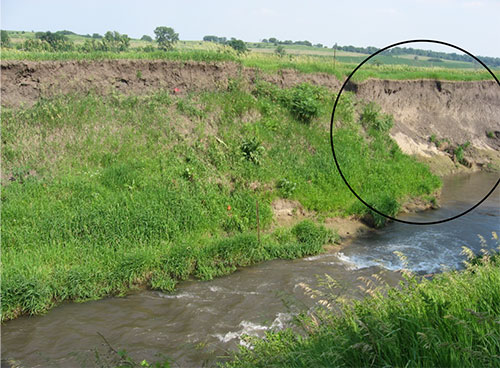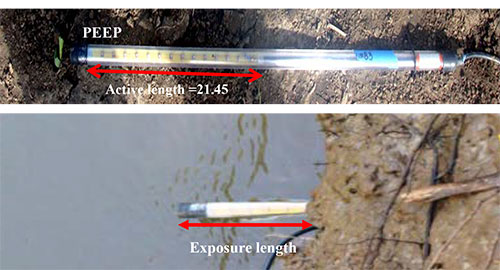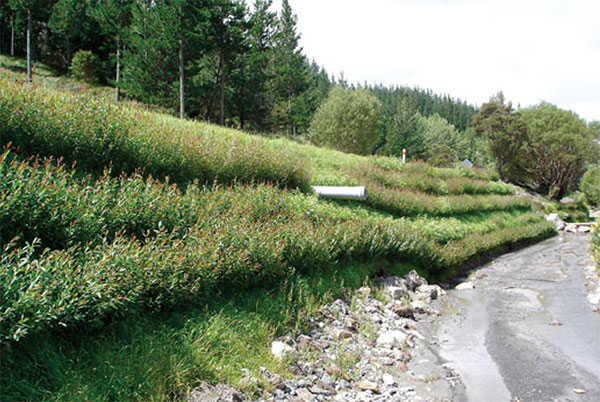On March 3, 2017, representatives from the TNWRRC, including Director Thanos Papanicolaou, Associate Director Tim Gangaware, John Schwartz, Mohammad Ghaneeizad, and Christopher Wilson, met with various state agencies during a workshop to address bank erosion and stream restoration concerns in Tennessee.
The day-long workshop was organized by John McClurkan and Sam Marshall of the Tennessee Department of Agriculture and held at the Ellington Agricultural Center in Nashville. More than 50 participants from the state Department of Environment and Conservation, the state Department of Transportation, the Natural Resources Conservation Service, the Nature Conservancy, the West Tennessee Basin Authority, and local consulting firms were present. The workshop will lead to the development of a classification scheme for the state that identifies the most appropriate bank stabilization technique for a particular stream reach. In addition, Thanos Papanicolaou and Christopher Wilson recently had a manuscript published focusing on monitoring bank erosion using photoelectric erosion pins, which can be used to assess the different stabilization techniques.
Stream bank erosion control using integrated proper functioning condition methods and bio-based stabilization structures: Bank erosion research by the UTK Hydraulics & Sedimentation Lab and the TN Water Resources Research Center

There is growing evidence that much of the sediment load in some streams comes from the channels/banks rather than upland areas, as channels adjust to altered flow regimes. Eroded bank soils trigger losses from fertile farm lands, as well as elevate turbidity and Phosphorus levels in the Mississippi River Basin and the Gulf of Mexico. These problems increase local water quality concerns and degrade of downstream ecosystems.
The best hope for a significant, permanent reduction of bank erosion is through the implementation of a two-layered innovative solution: (1) the coupling of area wide planning and assessment using Rapid Assessments of Stream Conditions Along Length (RASCAL) techniques with remediation employing (2) innovative bio-based stabilization structures (e.g., multi-species vegetative strips, willow fascines, and anchored biodegradable geotextiles), including monitoring of their effectiveness through Proper Functioning Condition (PFC) procedure.
The innovative aspects of this project lie in the use of newly improved assessment and evaluation techniques (RASCAL and PFC) coupled with state-of-the-art bank bio-based stabilization techniques and stream restoration designs that incorporate integrated interdisciplinary expertise from engineers, ecologists, and commodities.
RASCALs are modified versions of the NRCS Stream Visual Assessment Protocol, which provide surficial observations of bank erosion in the watersheds. A PFC Stream Assessment is a methodology for visually and swiftly assessing the physical functioning of streambanks through a series of site specific questions regarding physical and biological attributes. PFCs provide a consistent approach for assessing the physical functioning of the banks (i.e., how the banks will survive a 25 to 30 year flow event). These assessments are useful tools for prioritizing, developing, and implementing restoration activities, thereby identifying situations where in-stream structures are either entirely inappropriate or premature.
To the best of our knowledge very few studies have systematically examined bank soil properties in such detail along a bank profile and in different riverine segments (e.g., headwaters and mouth) leading to unique datasets with the goal of supporting a comprehensive bank stability analysis that considers both mass failure and fluvial erosion. Such a dual, complementary analysis is pertinent especially in flashy systems where toe cantilever failure due to the ensuing of fluvial erosion is ubiquitous and can result into mass failure.

We are monitoring bank erosion systematically using standard erosion pins and innovative Photo-Electric Erosion Pins (PEEPs) technology at the test and reference sites. Bank retreat are evaluated monthly by measuring the exposed length of the erosion pins. PEEPs allow for automated, continuous monitoring of bank erosion providing quantification of bank retreat rates. A PEEP has a series of diodes, which converts the available solar radiation to a voltage measurement. The voltage magnitude corresponds to the number of exposed diodes and the distance that the bank has eroded. We will verify the bank erosion measurements with monthly ground surveys and visual reconnaissance trips.
Undoubtedly, estimates of bank erosion would benefit from measuring devices that could detect bank retreat quasi-continuously to capture the timing of these erosion events. Traditional measurement methods, such as channel cross-section surveys, terrestrial photogrammetry, and conventional erosion pins cannot capture the quasi-continuous nature of mass erosion for relating retreat lengths with individual hydrologic events (and corresponding stress levels), since they are conducted at discrete time instances. Our past studies show the PEEPs for measuring quasi-continuous retreat lengths in response to different hydrologic events.
A water-and-sediment recirculating, straight conduit flume with a rectangular cross section of 10 cm x 5 cm and a useful length of 305 cm was utilized to estimate the strength of the soil. It is important to note that the purpose of the flume was not to replicate the exact hydrodynamic conditions of the study site but to allow for the estimation of the strength under controlled flow conditions by generically replicating the governing mechanisms of fluvial erosion, i.e., the shearing action of the flow. This type of flume was preferred over other available devices including jet tests, annular flumes, and open channel flumes for the following reasons: 1) the conduit flume delivers an applied shear to the surface of the sample, which is of a similar nature to the driving mechanism of fluvial erosion, i.e., shearing action; and 2) the flow in the conduit flume is pressurized, allowing for a wider range of applied bed shear stresses than open-channel flumes thus making the conduit flume suited for the analysis of well compacted bank cohesive soils in general.
Conservational Channel Evolution and Pollutant Transport System (CONCEPTS), to estimate the factor of safety for mass failureand fluvial/ mass erosion and simulate the bank retreat as a result of either fluvial erosion or mass failure or the interaction between the two modes of erosion.

Past channel restoration activities have relied heavily on riprap and other highly engineered structures without accounting for ecological context and natural stream processes. This team believes that designing and implementing bank stabilization in ecological and geomorphic context will result in improved ecological outcomes at a lower cost.
Targeted bio-based bank stabilization structures are being planned for selected stream reaches in Tennessee representing different regimes (zones) as indicated by bank height/ bankfull height ratio. The key difference between the sites is that due to their location in the watershed they experience different forces (shear stresses) by the flow. For example, banks found near the mouth, where the channel is wider and carries more flow, experience higher fluid shearing forces (~150 lbs/ft2) than banks found in the middle reaches (~ 70 lbs/ft2) and the headwaters (~30 lbs/ft2). In the headwaters, bank erosion predominately occurs at the bank toe. A 70% straw/ 30% coconut fiber role could be installed at the bank toe to limit this gradual erosion. The 12-inch diameter roles will be staked to the ground with rooted plants to prevent the roles from being carried downstream. Near the mouth, the higher stresses may require more robust protection like riprap.
The contributions of this research span across the spectrum of the different modes of bank erosion.